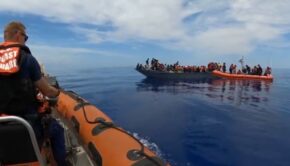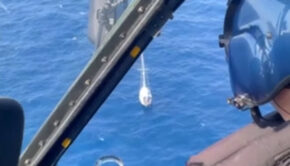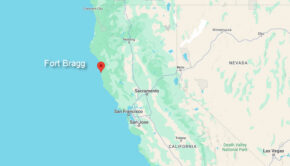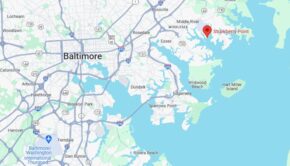Accidental activation of EPIRB alert
Published on February 21st, 2022
An Emergency Position Indicating Radio Beacon (EPIRB) is used to alert search and rescue services in the event of an emergency. It is an immensely effective tool when needed, and equally disruptive when unnecessarily activated as this report by the U.S. Coast Guard details:
San Juan, Puerto Rico (February 20, 2022) – The Coast Guard called off its search of a British rower early today after confirming the accidental activation of the rower’s EPIRB, approximately 360 nautical miles east northeast of Puerto Rico.
Not in distress is Jack Jarvis, 28, from Hampshire, United Kingdom, who was rowing across the Atlantic Ocean, from Portugal to Miami, aboard the 23-foot vessel Budgie, when the vessel’s EPIRB began transmitting a distress signal yesterday afternoon.
“This was a tremendous search effort which highlights the importance of registering your EPIRB as well as the great cooperation with our partners from Virgin Islands Search and Rescue and United Kingdom MRCC, who coordinated with us to locate Mr. Jarvis,” explained Cmdr. Beau Powers, Sector San Juan chief of response.
“I commend our watchstanders and aircraft crew for their professionalism and out-of-the box thinking, and extend our thanks and appreciation to the M/V Dyna Bulk which was ready to help us once they received the distress notification.
Coast Guard watchstanders at Sector San Juan received a report from Virgin Islands Search Rescue in the British Virgin Islands and from the UK Maritime Rescue Co-ordination Centre regarding an un-located 406MHz Emergency Positioning Indicating Radio Beacon alert. The report further relayed that the emergency contact for the alert confirmed it belonged to the vessel Budgie with one passenger aboard.
The emergency contact also provided a tracking link with the vessel Budgie’s last known position as of yesterday on 4:00pm. Coast Guard watchstanders issued and Emergency Group Calling to vessel traffic in the area and diverted a Coast Guard HC-144 Ocean Sentry aircraft from Air Station Cape Cod to search for the vessel Budgie.
At 10:52 pm AST, the Coast Guard HC-144 aircrew located the Budgie but was unable to establish contact with Jarvis, despite making multiple attempts on VHF radio, launching flares and completing several low passes over the vessel.
The aircrew confirmed the Budgie’s lights were illuminated and deployed a Self-Locating Datum Marker Buoy (SLDMB), a device used to measure the surface ocean currents that could assist rescue specialists in planning a search for a possible person in the water.
The Dyna Bulk, a St. Vincent and Grenadines flagged cargo ship, also responded the Emergency Group Calling and diverted to checkup on the Budgie’s position, while a Coast Guard HC-130 aircraft from Air Station Clearwater, Fla. was also launched to join the search.
Coast Guard watchstanders communicated with Jarvis’ support team this morning and confirmed Jarvis was not in distress and that the EPIRB alert was due to an accidental activation. Watchstanders have established a communications schedule with Jarvis’ support team until he safely reaches his destination in Miami.










 We’ll keep your information safe.
We’ll keep your information safe.